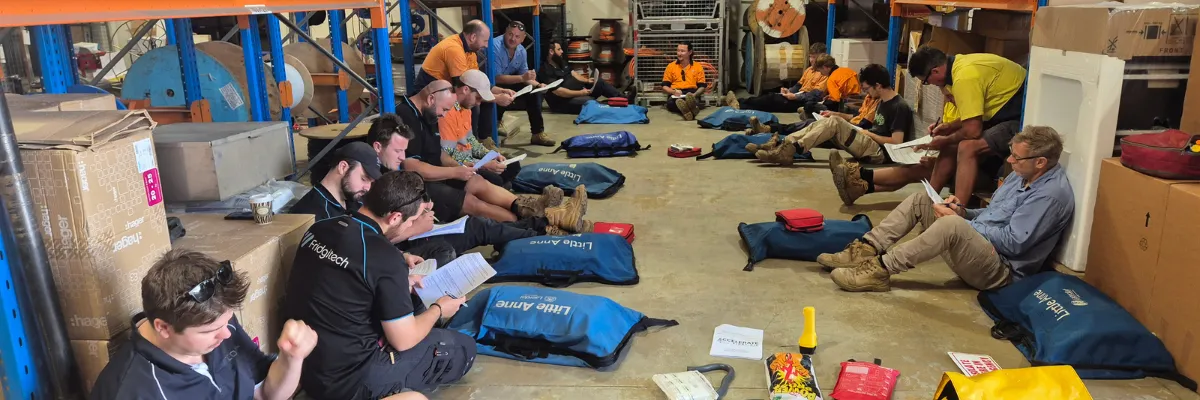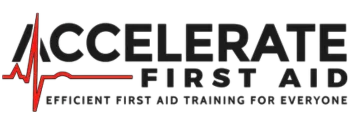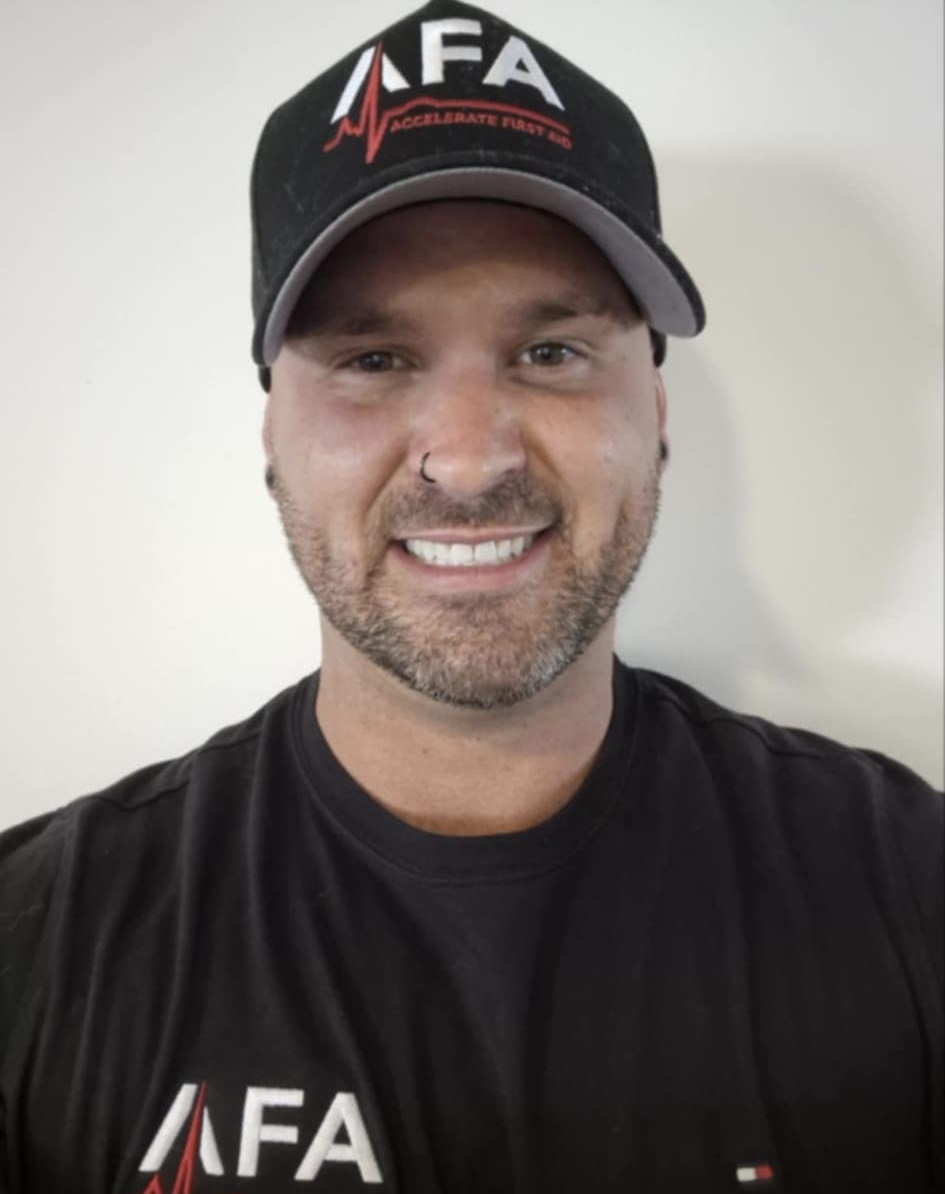
Asthma and Anaphylaxis Course Brisbane: Essential Training to Save Lives in Your Workplace
When 25-year-old marketing assistant Emma collapsed during a Brisbane office meeting last month, her colleagues watched helplessly as she struggled to breathe. What started as a seemingly normal Tuesday turned into a life-threatening emergency that could've been prevented with proper training.
Every 3 hours, someone in Australia dies from asthma, while anaphylaxis sends someone to the emergency room every 20 minutes. For Brisbane workplace managers, these aren't just statistics - they're potential scenarios that could unfold in your office, warehouse, or facility tomorrow.
As an HR manager or safety officer, ensuring your team can respond confidently to respiratory emergencies isn't just about compliance - it's about protecting the people you're responsible for every day. The weight of that responsibility can keep you up at night. What if something happens on your watch? What if you haven't provided the right training?
This guide covers everything you need to know about asthma and anaphylaxis training in Brisbane. You'll discover which certification your team actually needs, how to implement training effectively, and why this specialized course is becoming essential for Brisbane businesses across all industries.
Understanding Asthma and Anaphylaxis: Why Your Brisbane Workplace Needs This Training
What is asthma and how it affects Australian workplaces
Asthma isn't just about someone occasionally needing a puff of their inhaler. It's a serious condition affecting over 2.7 million Australians, and workplace triggers can turn a manageable condition into a life-threatening emergency faster than you'd think.
In Brisbane workplaces, we see asthma attacks triggered by everything from cleaning chemicals in office buildings to dust in warehouses, even stress from tight deadlines. The humidity here doesn't help either - it can make breathing difficult for people who normally manage their condition just fine.
Your team needs to recognize when someone's sitting forward, struggling to speak in full sentences, or when their reliever isn't working like it usually does. These aren't just symptoms to memorize - they're warning signs that could save someone's life.
Anaphylaxis explained: The 15-minute emergency window
Anaphylaxis is where things get really scary, really fast. We're talking about a severe allergic reaction that can kill someone in 15 minutes or less. That's not enough time to wait for an ambulance, especially during Brisbane's peak hour traffic.
The tricky part? Anaphylaxis doesn't always look like what you see in movies. Someone might just mention feeling dizzy, complain about their tongue feeling funny, or say they're having trouble swallowing. By the time the obvious symptoms appear - swelling, difficulty breathing, loss of consciousness - you're already behind the clock.
Common workplace triggers include:
Food allergens (nuts, dairy, shellfish in catered lunches)
Insect stings (especially problematic for outdoor workers)
Medications (including over-the-counter pain relievers)
Latex (in cleaning supplies, office equipment)
Cleaning chemicals and industrial products
Brisbane-specific considerations and legal obligations
Brisbane's climate creates unique challenges for respiratory conditions. Our humidity levels can trigger asthma attacks, and our longer outdoor working season means more exposure to insect stings and environmental allergens.
Emergency response times in Brisbane vary dramatically depending on location and time of day. If you're in the CBD, you might get paramedics in 8-10 minutes. If you're in outer suburbs or industrial areas, it could be 15-20 minutes. During peak hour or storm season, those times can double.
Under Queensland's Work Health and Safety Act, employers have a duty of care to provide a safe workplace. While there's no specific legal requirement for every workplace to have asthma and anaphylaxis trained staff, if you have employees with known conditions, or if your workplace has higher risk factors, you could be legally liable if you haven't provided appropriate training.
Recent WorkSafe Queensland cases have shown that "we didn't think it would happen to us" isn't a defense. The expectation is that you've done a proper risk assessment and taken reasonable steps to manage identified risks.

Course Options: 22300VIC vs 22556VIC - Which Does Your Team Need?
22300VIC Course breakdown and target audience
The 22300VIC course is your entry-level option - "Provide First Aid Response in an Education and Care Setting." This course runs for about 4 hours and covers:
Basic asthma management and inhaler use
Recognizing mild to moderate allergic reactions
When to call for help vs. managing symptoms
Documentation requirements for incidents
Who should do 22300VIC:
Childcare centers and early learning facilities
Schools and educational institutions
Offices with lower risk profiles
Businesses wanting basic coverage for all staff
While this course will give your team confidence with everyday situations, it might not prepare them for severe emergencies. The certification lasts for 3 years, but many Brisbane businesses are moving toward annual refreshers.
22556VIC Course content and requirements
The 22556VIC - "Apply First Aid Response to Anaphylaxis" - is where things get serious. This is the course that actually prepares your team for life-threatening emergencies.
It's a full day of training (4-5 hours) that covers:
Advanced anaphylaxis recognition and response
Proper EpiPen administration techniques
Severe asthma attack management
Emergency action plans and documentation
Legal considerations and duty of care
Workplace risk assessment for allergic reactions
Who needs 22556VIC:
Healthcare facilities and aged care
Food service and hospitality businesses
Manufacturing with chemical exposures
Any workplace with known high-risk employees
Organizations wanting comprehensive coverage
Course comparison at a glance
Industry-specific recommendations
Childcare and education: 22300VIC is the minimum legal requirement, but many Brisbane centers are upgrading to 22556VIC.
Corporate offices: If you're just covering general office work, 22300VIC might be sufficient. But if you cater lunches, host events, or have employees with known conditions, 22556VIC is worth considering.
Healthcare and aged care: 22556VIC is pretty much non-negotiable.
Food service: 22556VIC, no question. You're dealing with the most common anaphylaxis triggers every day.
Manufacturing and construction: Depends on your exposures and workplace hazards. If you have respiratory irritants or potential allergens, lean toward 22556VIC.
Real-World Emergency Scenarios: What Your Team Will Learn
Recognizing early warning signs of asthma attacks
The biggest mistake people make is waiting for the obvious symptoms. By the time someone's gasping for breath and can't speak, you've missed the early intervention window.
Your team will learn to spot the subtle signs:
Changes in speech patterns (shorter sentences, quieter voice)
Sitting forward or hunching over
Using shoulder muscles to breathe
Restlessness or anxiety
Pale or blue-tinged lips and fingernails
Difficulty walking or moving normally
Here's a training scenario: Sarah from accounting mentions she's feeling "a bit tight" in her chest during a morning meeting. A trained team member recognizes this as a potential early warning, quietly asks if she has her reliever, suggests she use it, and monitors her response.
Anaphylaxis identification and response protocols
Your team needs to understand that anaphylaxis is a whole-body reaction that can affect different systems in different ways. Someone might just say they feel "funny" or "something's not right."
The training covers the ASCIA Action Plan approach:
Mild-moderate allergic reaction: Localized swelling, hives, stomach pain
Anaphylaxis: Any breathing difficulty, swelling of tongue/throat, persistent dizziness, or severe whole-body reaction
Proper use of inhalers and EpiPens
Your team learns proper inhaler technique:
Shake first: Most inhalers need shaking before use
Slow, deep breath: Not a quick puff, but a slow, controlled inhalation
Hold breath: 10 seconds if possible
Wait between puffs: 30-60 seconds if multiple puffs needed
Key EpiPen points your team will master:
Orange to the sky, blue to the thigh: Remember correct orientation
Firm pressure: Push hard and hold for 10 seconds
Through clothing: Don't waste time removing clothing
Call ambulance immediately: EpiPen is temporary relief, not a cure
Second dose: When and how to give it if symptoms return
When to call emergency services vs. managing in-house
Your team needs clear protocols about when to call an ambulance versus when to monitor and manage symptoms internally.
The training teaches the "when in doubt, call" principle. Your team will also learn how to communicate effectively with emergency services, providing clear descriptions of symptoms, medications given, and exact location details.

Implementation Strategy: Rolling Out Training Across Your Organization
Training schedule planning and employee coordination
The biggest implementation mistake is trying to train everyone at once. This creates chaos and leaves you vulnerable when people are away.
Strategic rollout approach:
Phase 1 (Month 1-2): Core team: Train safety wardens, supervisors, and key personnel first. Aim for 20-30% of your workforce.
Phase 2 (Month 3-4): Department representatives: Train at least one person from each department or shift.
Phase 3 (Month 5-6): General staff: Fill in the gaps with remaining team members.
Managing resistance and buy-in: Address employee concerns by explaining personal benefits, not just workplace compliance. Share stories of real workplace emergencies where training made the difference. Make it personal: "This isn't about ticking boxes - it's about helping your teammate if they're in trouble."
Compliance documentation and record keeping
Your documentation system needs to survive audits, insurance reviews, and staff turnover.
Documentation requirements:
Training attendance records with dates and participant names
Copies of all certifications and their expiry dates
Course content outlines and assessment results
Training provider credentials and RTO registration numbers
Emergency response procedures and action plans
Systems that work:
Digital tracking spreadsheet with renewal alerts
Cloud storage with backup systems
Calendar integration for expiry reminders
Include training records in personnel files
Ongoing refresher training requirements
Three-year certifications don't mean three years without reinforcement. Skills fade and people forget.
Recommended refresher schedule:
Annual skills review
Quarterly team meetings with emergency response discussions
Monthly equipment checks
Include emergency response in new employee orientation
Creating workplace emergency response protocols
Training people is only half the solution. You need clear, written procedures that everyone can follow under stress.
Emergency action plan components:
Recognition phase:
Clear symptom descriptions in plain language
Decision trees for mild vs. severe reactions
Who to notify and when
Where emergency supplies are located
Response phase:
Step-by-step medication administration procedures
Communication scripts for calling emergency services
Roles and responsibilities during emergencies
Recovery phase:
Follow-up medical care requirements
Incident reporting procedures
Communication with families and management
Testing your protocols:
Conduct quarterly emergency drills
Include different times of day and staffing levels
Test communication systems and backup procedures
Review and improve based on performance
Your Next Steps
You now have the complete picture of asthma and anaphylaxis training for your Brisbane workplace. The choice isn't whether you need this training - it's when you're going to make it happen.
The peace of mind that comes from knowing your team can handle respiratory emergencies is invaluable. You're building a workplace culture where people genuinely care about each other's safety.
Don't wait for an emergency to realize you should have acted sooner. Your team, your business, and your own professional security depend on the decisions you make today.
Ready to get started? Contact Brisbane's most trusted training provider for asthma and anaphylaxis courses. We offer flexible scheduling, group options, and Brisbane-specific training that prepares your team for real emergencies.
Call us today at 0434778243 | 04FIRSTAID to discuss your team's needs and book your training. Same-week availability guaranteed, because workplace safety can't wait.


